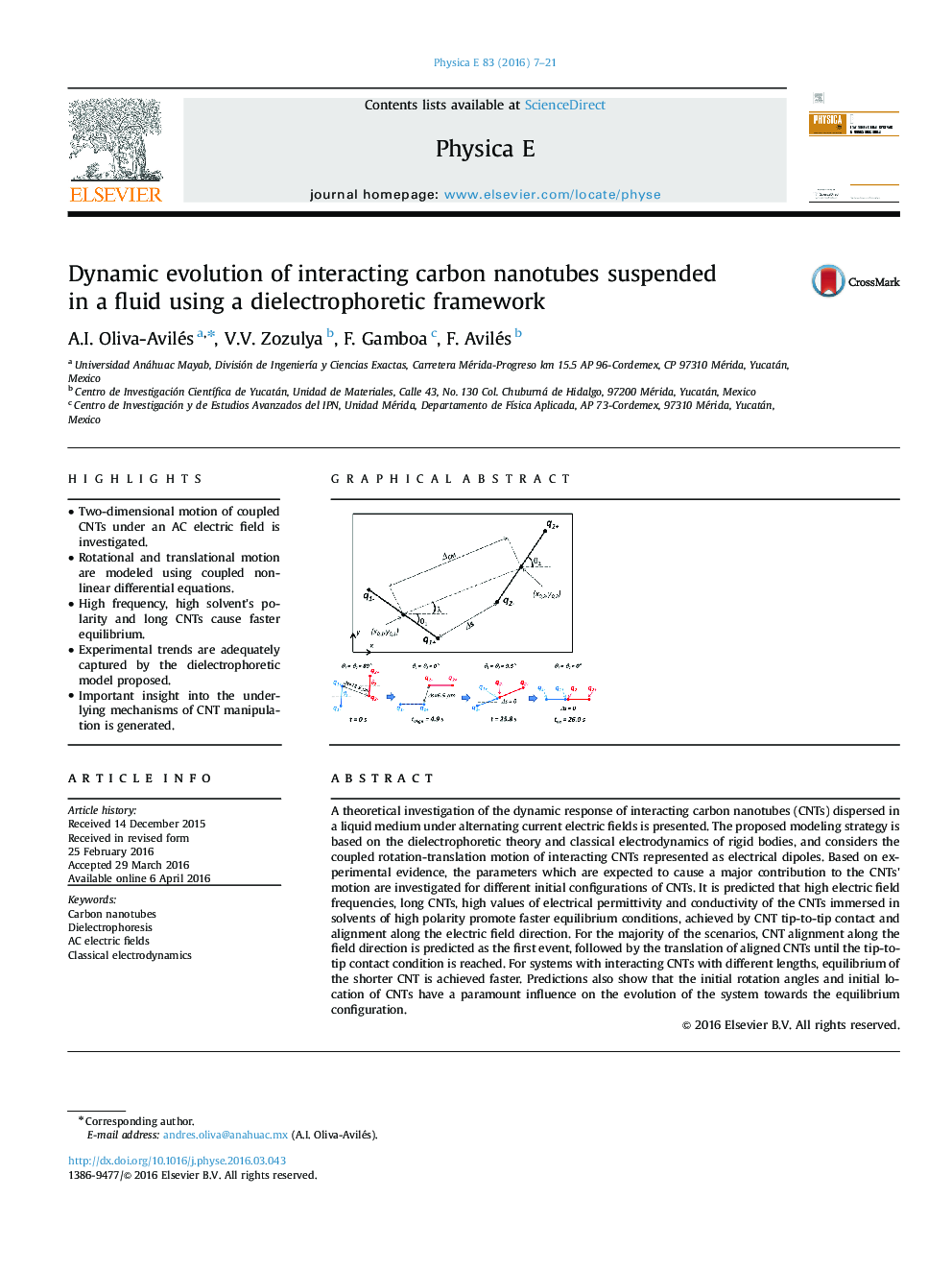| کد مقاله | کد نشریه | سال انتشار | مقاله انگلیسی | نسخه تمام متن |
|---|---|---|---|---|
| 1543739 | 1512866 | 2016 | 15 صفحه PDF | دانلود رایگان |
• Two-dimensional motion of coupled CNTs under an AC electric field is investigated.
• Rotational and translational motion are modeled using coupled nonlinear differential equations.
• High frequency, high solvent's polarity and long CNTs cause faster equilibrium.
• Experimental trends are adequately captured by the dielectrophoretic model proposed.
• Important insight into the underlying mechanisms of CNT manipulation is generated.
A theoretical investigation of the dynamic response of interacting carbon nanotubes (CNTs) dispersed in a liquid medium under alternating current electric fields is presented. The proposed modeling strategy is based on the dielectrophoretic theory and classical electrodynamics of rigid bodies, and considers the coupled rotation-translation motion of interacting CNTs represented as electrical dipoles. Based on experimental evidence, the parameters which are expected to cause a major contribution to the CNTs' motion are investigated for different initial configurations of CNTs. It is predicted that high electric field frequencies, long CNTs, high values of electrical permittivity and conductivity of the CNTs immersed in solvents of high polarity promote faster equilibrium conditions, achieved by CNT tip-to-tip contact and alignment along the electric field direction. For the majority of the scenarios, CNT alignment along the field direction is predicted as the first event, followed by the translation of aligned CNTs until the tip-to-tip contact condition is reached. For systems with interacting CNTs with different lengths, equilibrium of the shorter CNT is achieved faster. Predictions also show that the initial rotation angles and initial location of CNTs have a paramount influence on the evolution of the system towards the equilibrium configuration.
Figure optionsDownload as PowerPoint slide
Journal: Physica E: Low-dimensional Systems and Nanostructures - Volume 83, September 2016, Pages 7–21
